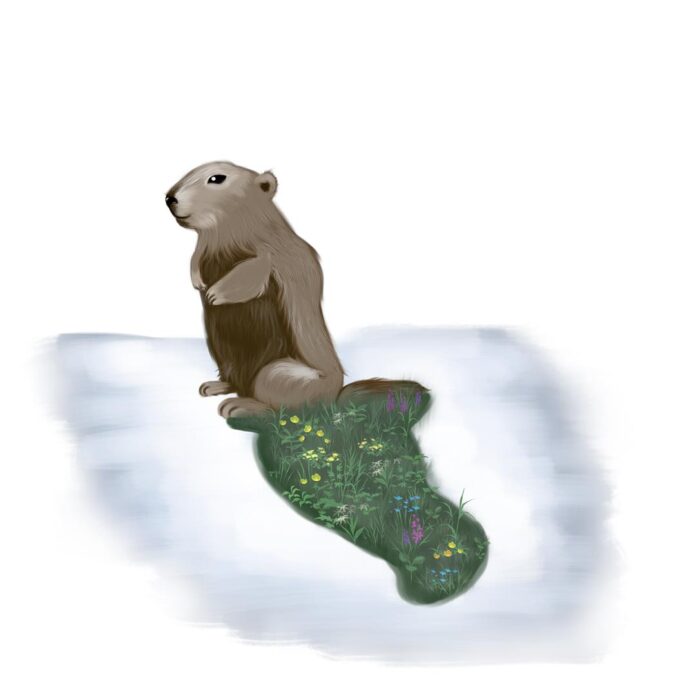Over the last few centuries, we have outgrown superstition. Science. Physics. Mathematics. Meteorology. Humanity has developed scientifically proven methods of understanding and accurately predicting the world around us… but nothing that can beat a groundhog and its shadow.
Yearly, on Feb. 2, cities all over North America come together to watch the local groundhog come out of its burrow. If its own shadow then spooks the little beast, we are bound to another six weeks of winter weather.
It’s perfectly logical; I don’t know why you look so confused.
The origins of the tradition are hazy — or dare I say, muddy. Some say it can be traced back to the Celt celebration of Imbolc: a pagan festival taking place in the midpoint between winter and spring. Others say it has ties to the Roman holiday Februalia, which took place – you guessed it — at the beginning of February.
Where it started, we’ll never know — but just like most holidays and observances we discuss on this column, it started somewhere, at some point, and every couple hundred years the colonizer of the time gets to give it their own spin.
One thing we know is that before meteorologist groundhogs, we actually looked up at the sky. On this same Feb. 2, probably going off those ancient celebrations, pre-Victorian Christians would celebrate Candlemas, which sounds like Christmas, but instead of gifts the clergy would bless and give the people candles. A sunny Candlemas meant another forty days of cold and snow (reverse psychology at its finest!).
Later, the Germans came up with their own version of the legend. Because a blue sky with plenty of sunlight didn’t quite do it for them, they decided the day would only be considered sunny if groundhogs and other small animals noticed their own shadows. Then, when German immigrants arrived in North America in the eighteenth and nineteenth centuries, they brought the custom with them to Pennsylvania — and groundhogs haven’t had a peaceful Feb. 2 ever since.
Hollywood didn’t help much either. Ever since the release of the 1993 film Groundhog Day, the term has also become a synonym for something that repeats endlessly. Aside from that, the movie has little to do with marmots — or the weather, for that matter.
However, it still popularized the tradition, bringing even more terror to the poor groundhogs, while also associating these cute little fellas with the dreaded idea of a torturously vicious cycle — thanks a lot, Bill Murray.
Surprisingly, though, there are no scientific “grounds” on groundhogs and their predictions. One of the best meteorologists of them, Staten Island Chuck, for example, has only been correct about 80 per cent of the time.
In Canada, the tradition is growing in popularity. B.C. has its own weather marmot — Van Isle Violet, of Vancouver Island, who last year predicted another six weeks of winter. Hopefully, she’s in a better mood this time around.
Perhaps there is some deeper meaning to the trust we put into such a little creature. The same nature that gives us the cold of winter might as well be the same nature that can promise us an early spring. Humans since the beginning of time have known to listen closely for these signals from mother nature, and, though the logic behind most of those rites might not be quite logical, perhaps it is not meant to be rational. Perhaps our primitive instincts know exactly what to listen for, whether that’s the rumble of thunder or the cry of a groundhog. Perhaps, deep inside, we know something our science doesn’t.
Or maybe we just like harassing animals for no reason. Yeah, that sounds about right.


